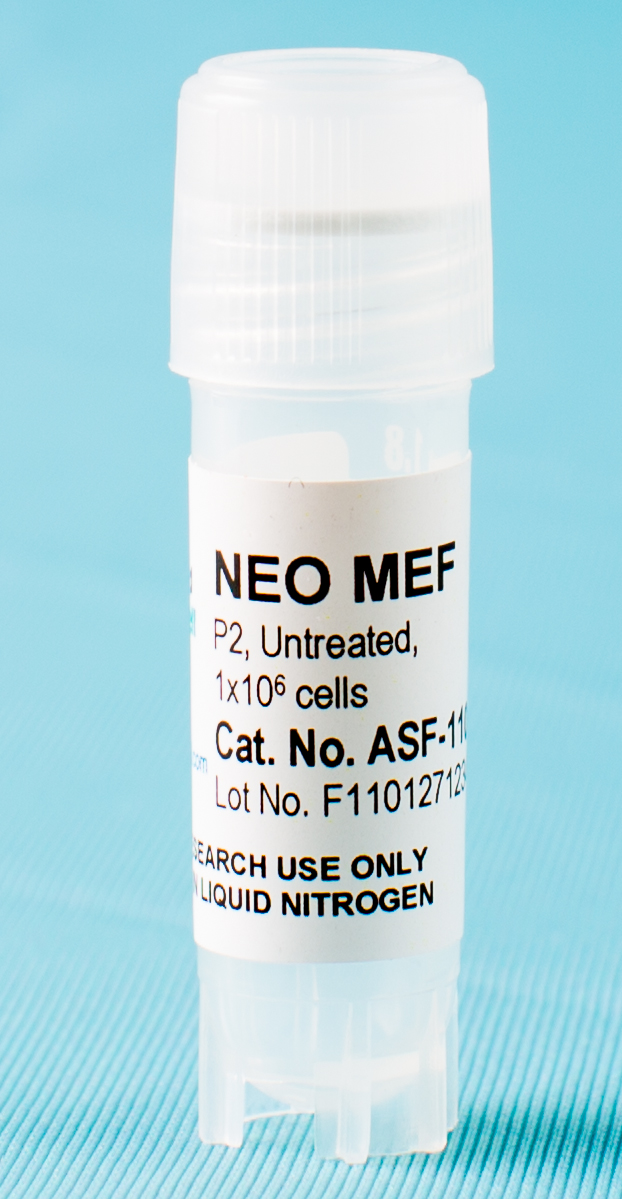Newsletter
Neo-resistant MEF Feeder Cells
Isolated from mouse embryos and are resistant to neomycin.
MEF cells serve as feeder cells to support the growth of undifferentiated mouse or human embryonic stem cells (ESCs) and induced pluripotent stem cells (iPSCs). MEF cells are isolated from mouse embryos and should be used at an early passage. Before use as feeder cells, MEF cells must be mitotically inactivated by γ-irradiation or mitomycin-C treatment.
Neo-resistant MEF feeder cells are derived from 13.5 day old mouse embryos that are genetically engineered to contain Neomycin-resistance genes and are optimized for the culture of ES/iPS cells under G418 selection.
All MEF cells are manufactured in the US and have an average viability of 95% after thawing. We offer both untreated cells for further expansion and treated cells that can be directly used as a feeder layer.
Also be sure to see our CF-1 MEF Feeder Cells, DR4 MEF Feeder Cells, and SNL 76/7 (STO Cell Line) MEF Feeder Cells.

Products and Services
Support Materials
Brochures/ Flyers:
Publications
Neo-resistant MEF Feeder Cells
- Mansour, A. A., Gonçalves, J. T., Bloyd, C. W., Li, H., Fernandes, S., Quang, D., ... & Gage, F. H. (2018). An in vivo model of functional and vascularized human brain organoids. Nature biotechnology, 36(5), 432. doi:10.1038/nbt.4127
- Heim, C. N., Fanslow, D. A., & Dann, C. T. (2012). Development of quantitative microscopy-based assays for evaluating dynamics of living cultures of mouse spermatogonial stem/progenitor cells. Biology of reproduction, 87(4), 90-1.
- Mauney, J. R., Ramachandran, A., Richard, N. Y., Daley, G. Q., Adam, R. M., & Estrada, C. R. (2010). All-trans retinoic acid directs urothelial specification of murine embryonic stem cells via GATA4/6 signaling mechanisms. PloS one, 5(7), e11513.


-L1_L2.jpg)
